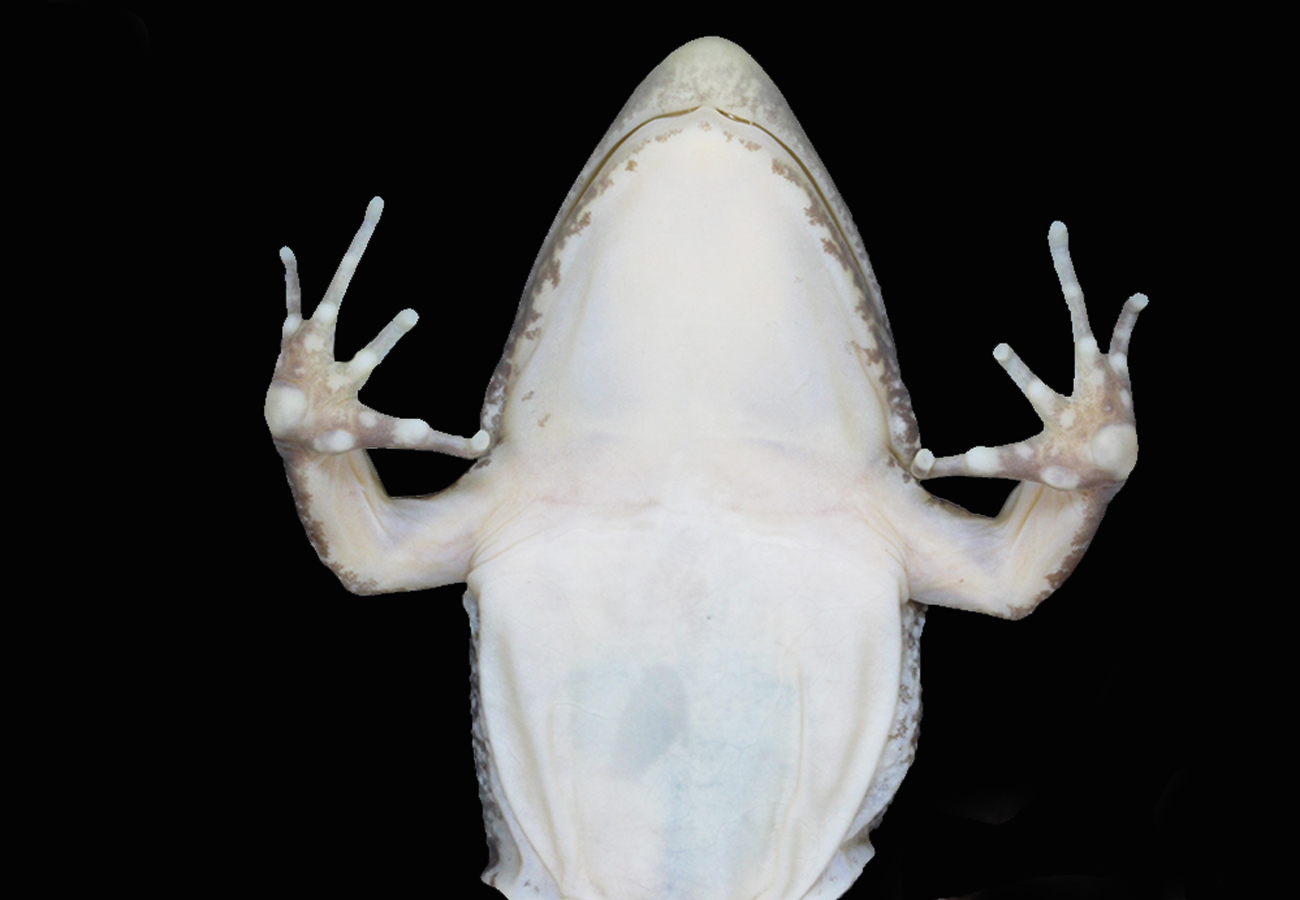Abstract
In a recent contribution to the systematics of Leptodactylus Fitzinger, 1826 frogs endemic to the Brazilian campo rupestre (Carvalho et al. 2021), we revealed a genetically divergent lineage as an unnamed species distributed in the northern portion of the Espinhaço Mountain Range (EMR). The species was named and described as Leptodactylus avivoca in the taxonomic account section of the same paper, where a definition and diagnosis were provided to satisfy the provisions regarding the availability and validity of new nomina (see Chapters 4 and 6 of the International Code of Zoological Nomenclature, hereinafter the Code; Anonymous 1999). On that occasion, because of space limits imposed by the journal, we had to transfer most of the new species description into an Appendix, keeping in the main publication only the minimum requirements that would satisfy the rules and recommendations governed by the Code, thereby ensuring the availability and validity of the proposed new name. As a result of the transference from the main text to the Appendix, we ended up not taking notice that the species’ holotype had not been fixed in the main publication and appeared only as part of Appendix S1. Additionally, this Appendix was made available only as Online Supporting Material (Carvalho et al. 2021: Appendix S1) and not published alongside the main publication in the printed version. That rendered the proposition of Leptodactylus avivoca as originally published an atelonym (sensu Dubois 2011), i.e. an unavailable nomen (sensu Dubois 2000) as a consequence of the lack of explicit fixation of a holotype and statement of the collection where it was deposited in the main publication (Article 16.4 of the Code). In this paper, we intend to correct this nomenclatural oversight by proposing a new (homographic) nomen for the new Leptodactylus species, which corresponds to a genetic lineage endemic to the northern portion of the EMR, and also provide a definition and differential diagnosis in its own clade (L. plaumanni clade; sensu Carvalho et al. 2021).
References
Anonymous [ICZN] (1999) International code of zoological nomenclature. Fourth edition. London (International Trust for Zoological Nomenclature): i–xxix + 1–306.
Ahl, E. (1936) Zweif neue Froscharten der Gattung Leptodactylus aus Südamerika. Veröffentlichungen aus dem Deutschen Kolonial- und Übersee-Museum in Bremen, 1: 389–392.
Carvalho, T. R., Leite, F. S. F. & Pezzuti, T. L. (2013) A new species of Leptodactylus Fitzinger (Anura, Leptodactylidae, Leptodactylinae) from montane rock fields of the Chapada Diamantina, northeastern Brazil. Zootaxa, 3701 (3): 349–364. <https://doi.org/10.11646/zootaxa.3701.3.5>.
Carvalho, T. R., Seger, K. R., Magalhães, F. M., Lourenço, L. B. & Haddad, C. F. B. (2021) Systematics and cryptic diversification of Leptodactylus frogs in the Brazilian campo rupestre. Zoologica Scripta, 50 (3): 300–117. <https://doi.org/10.1111/zsc.12470>.
Dubois, A. (2000) Synonymies and related lists in zoology: general proposals, with examples in herpetology. Dumerilia, 4 (2): 33–98.
Dubois, A. (2011) The International Code of Zoological Nomenclature must be drastically improved before it is too late. Bionomina, 2 (1): 1–104. <https://doi.org/10.11646/bionomina.2.1.1>.
Fitzinger, L. I. (1826) Neue classification der Reptilien nach ihren natürlichen verwandtschaften nebst einer verwandtschafts-tafel und einem verzeichnisee der reptilien-sammlung des K. K. Zoologisch Museum’s zu Wien.Vienna (J. G. Heubner): i–viii + 1–66, 1 tab. <https://doi.org/10.5962/bhl.title.4683>.
Izecksohn, E. (1976) Uma nova espécie de Leptodactylus do Estado do Rio de Janeiro, Brasil (Amphibia, Anura, Leptodactylidae). Revista brasileira de Biologia, 36 (2): 527–530.
Sazima, I. & Bokermann, W.C.A. (1978) Cinco novas espécies de Leptodactylus do centro e sudeste brasileiro (Amphibia, Anura, Leptodactylidae). Revista brasileira de Biologia, 38 (4): 899–912.


